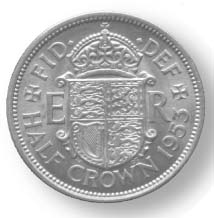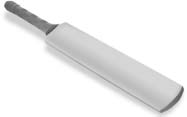
In the English summer of 1948 the coin toss was the only thing the Aussies lost as they thrashed England in a series of ruthlessly magnificent performances.
Only once in the five Tests did captain Don Bradman guess right when asked to call heads or tails. No matter, for his boys won the cricket. And handsomely, earning the sobriquet ‘The Invincibles’, and prompting John Arlott to reminisce more than thirty years later that they were so ‘brilliant and so full of character as to compel respect from the losers, and admiration from even their most devoted supporters’. England knew they were in trouble even before the Aussies had set foot in the Old Country. When England batsman Bill Edrich wrote his autobiography in the winter of 1947/48, he cast an eye towards the impending Ashes series with Australia, the first in England since 1939. ‘They are indisputably the strongest cricketing nation at the moment,’ wrote Edrich, who then listed their names. Some had been to England before, men such as Bradman, Bill Brown, Lindsay Hassett and Sid Barnes, but most were unknown to the English other than what they had read in the papers. Were Bill Johnston, Ray Lindwall and Keith Miller really as quick and as dangerous as they said with the new ball? Just how good a batsman was the nineteen-year-old Neil Harvey, bearing in mind that against India at the start of the year he’d become Australia’s youngest Test centurion? And was Arthur Morris almost as prolific a run-getter as Bradman?

‘Many of these names will go on from strength to strength for many seasons yet,’ predicted Edrich, who then finished with a word about Bradman. ‘He is the greatest batsman the game has produced up to now… I am sure he will end his cricket career in a blaze of glory.’

Colin McCool’s googlies did the damage with the ball
But not even Edrich could have guessed how fiercely the blaze would burn. The Australians opened their tour at Worcester on 28 April; they won by an innings and 17 runs. Bradman and Morris scored tons, and the googlies of the beautifully named Colin McCool did the damage with the ball.
Next up were Leicestershire, demolished by an innings and 171 runs. Keith Miller helped himself to a double century, and Ian Johnson’s right-arm off-breaks skittled out the hosts.
Yorkshire’s turn came a few days later. Mighty Yorkshire, winners of four of the last five County Championship titles. They were all out for 71 in their first innings and all out for 89 in their second.
And so the carnage continued for the rest of the summer. In all, the tourists won half their thirty-four matches with an innings to spare. Eleven Australians hit fifty centuries and seven of their batsmen scored more than 1,000 runs on the tour. In twenty-four of their innings they made 350 or more, and the highest score against them by a county side was Nottinghamshire’s 299 for eight.
As for the national side, England’s finest fared little better than their county colleagues. They lost the first Test at Trent Bridge by eight wickets; the second at Lord’s – where Bradman won his one and only toss – by 409 runs; the fourth by seven wickets and the fifth by an innings and 149 runs. Only the rain-affected third Test at Old Trafford prevented Bradman’s side from attempting to emulate Warwick Armstrong’s 1921 feat of a 5–0 Ashes whitewash.
But Bradman’s side achieved something that not even Armstrong had managed. In the fourth Test at Leeds England put up a hell of fight and set the tourists 404 to win the match. No side in history had ever scored more than 400 in the fourth innings of a Test to seal victory. Australia did it with seven wickets to spare, on a wicket taking spin, thanks to a stand of 301 between Bradman and Morris.
The match was one of the greatest – if not the greatest – ever seen in England, and a record 158,000 had squeezed into Headingley over the course of the five days. The aggregate of 1,723 runs that they saw was highest for any match in England, and, as Wisden said, it was ‘the most remarkable performance by any touring side’.
In an unprecedented move Wisden selected all of its Five Cricketers of the Year for 1948 from the tour party (Morris, Johnston, Hassett, Lindwall and Tallon), but the biggest honour was bestowed on Australia’s captain.

The coin toss was the only thing the Aussies lost
Bradman scored 508 runs in the Test series at an average of 72.57, and overall he scored more centuries that summer in England than any other batsman – and this in his fortieth year. It was an imperious way in which to bow out of the game he’d graced for twenty years, and his reward came in the New Year’s Honours list of 1949 when he was knighted by King George VI for services to cricket.
‘There was no thought of reward,’ wrote Bradman, reflecting upon his knighthood. ‘However, it was clear that I was the medium through which was to be expressed England’s appreciation of what Australian cricket has meant to the British Empire. In that it was a compliment to Australia and to the game of cricket.’